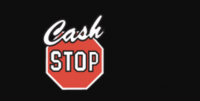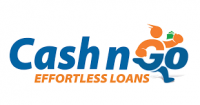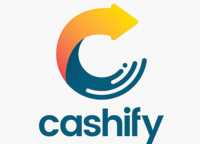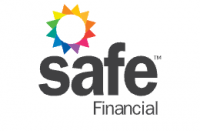 Your independent loan comparison!
Your independent loan comparison!
Unsecured personal loan
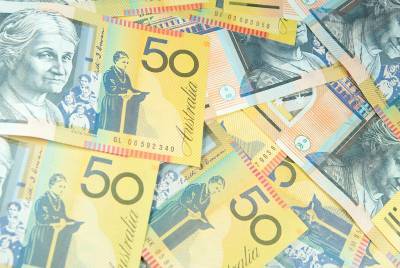
When searching for the right personal loan for your needs, you might be faced with the choice between a secured loan or an unsecured loan. The loan amount may be the same but there are other differences and important information to consider when deciding which is the best option for you.
Fast information
Properties of this loan
- Online loans up to $1 900
- Term 3 - 12 months
Loan requirements
- You must be over 18 years old
- An Australian citizen or Australian permanent resident and have a regular income
- You will also need your own email address and mobile phone number
About company
More information about the company Ferratum Australia Pty Ltd.
Fast information
Properties of this loan
- Online loans up to $5 000
- Term 1 - 24 months
Loan requirements
- Be a Permanent Resident
- Be aged 18 years or over
About company
More information about the company Cash Stop Gold Pty Ltd
Fast information
Properties of this loan
- Online loans up to $2 000
- Term 1 - 3 months
- Easy online application
Loan requirements
- You need to be at least 18 years old to apply for a loan
- Valid mobile number and email address
About company
More information about the company Venture 5 Group Pty Ltd
Fast information
Properties of this loan
- Online loans up to $50 000
- Term 3 - 5 years
- Easy online application
Loan requirements
- An Australian resident
- Over 18
- Employed
About company
More information about the company Harmoney Australia Limited
Fast information
Properties of this loan
- Online loans up to $75 000
- Term 1 - 7 years
Loan requirements
- Earn more than $40,000 a year
- Be 18 years or older and a permanent Australian resident
About company
More information about the company Citigroup Pty Limited
Fast information
Properties of this loan
- Online loans up to $15 000
- Term 3 - 24 months
- Easy online application
Loan requirements
- Cashify Personal Loans from $500.00 – $2,000.00: Maximum Monthly Interest Rate is 4%. Maximum Annual Percentage Rate (APR) is 48%. The Establishment Fee is 20% of the loan amount borrowed. Other fees may apply. Please refer to your loan contract for all fees, interest, and terms and conditions. Minimum loan contracts are generally 90 days with most loan contracts between 90 to 365 days. For example, a loan of $500.00 repaid over 3 months equates to a total amount payable of $702.00 comprised of $500.00 principal (amount borrowed), $100.00 Establishment Fee, $72.00 in interest and $30.00 in monthly account fees.
About company
More information about the company Cash Supply Pty Ltd
Fast information
Properties of this loan
- Personal loan up to $80 000
- Term 1 - 7 years
Loan requirements
- Be aged 18 years or over
- Have a regular permanent income before tax of at least $35,000 p.a.
- Be an Australian citizen or have a permanent residency visa
- If you’re a non-resident, have confirmed employment in Australia
About company
More information about the company St.George Bank
Fast information
Properties of this loan
- Credit Card up to $40 000
- Term 1 – 60 months
Loan requirements
- 18 years or older
- A permanent resident of Australia or hold a relevant work visa
- Not currently bankrupt
- Employed, or a self-funded retiree
- Looking to borrow $1,000 or more
About company
More information about the company Bank Australia Limited
Fast information
Properties of this loan
- Online loans up to $30 000
- Term 6 - 60 months
Loan requirements
- Over the age of 18 years old
- Be receiving regular income
- Haven’t been bankrupt
- Be an Australian Citizen /
- Permanent Resident
About company
More information about the company Alex Bank Pty Ltd ABN
Fast information
Properties of this loan
- Online loans up to $50 000
- Term 1 - 7 years
- Easy online application
Loan requirements
- Be at least 18 yrs old
- Be an Australian citizen, or permanent resident
- Have no record of prior bankruptcy
About company
More information about the company Plenti RE Limited ABN
Fast information
Properties of this loan
- Online loans up to $30 000
- Term 3 - 7 years
Loan requirements
- Be at least 18 yrs old
- Be an Australian citizen, or permanent resident
- Have no record of prior bankruptcy
About company
More information about the company Wisr Finance Pty Ltd
Fast information
Properties of this loan
- Credit Card up to $20 000
- Term 1 – 12 months
Loan requirements
- 18 years or older
- A permanent resident of Australia or hold a relevant work visa
- Not currently bankrupt
- Employed, or a self-funded retiree
About company
More information about the company Bankwest, a division of Commonwealth Bank of Australia
Fast information
Properties of this loan
- Credit Card up to $30 000
- Term 1 – 12 months
Loan requirements
- 18 years or older
- A permanent resident of Australia or hold a relevant work visa
- Not currently bankrupt
- Employed, or a self-funded retiree
About company
More information about the company National Australia Bank Limited
Fast information
Properties of this loan
- Online loans up to $5 000
- Term 22 - 52 weeks
- Easy online application
Loan requirements
- Be at least 18 years old
- Be an Australian citizen or permanent resident
- Have a minimum weekly income of $500
- Not have Centrelink as your only source of income
- Safe Financial considers applications from people with bad credit but they discourage applicants from people with multiple unpaid loan defaults on their credit report or if they're currently in a Part 9 Debt Agreement
About company
More information about the company Safe Financial Group Pty Ltd
Fast information
Properties of this loan
- Online loans up to $10 000
- Term 1 - 12 months
- Easy online application
Loan requirements
- 18 years of age or older
- A permanent Australian resident
- In regular paid employment (not including Centrelink)
About company
More information about the company Fair Go Finance
Fast information
Properties of this loan
- Credit Card up to $50 000
- Term 1 – 12 months
Loan requirements
- 18 years or older
- A permanent resident of Australia or hold a relevant work visa
- Not currently bankrupt
- Employed, or a self-funded retiree
About company
More information about the company Bankwest, a division of Commonwealth Bank of Australia
Fast information
Properties of this loan
- Personal unsecured Loan up to $100 000
- Term 1 – 7 years
Loan requirements
- Over the age of 18 years old
- Be receiving regular income
- Haven’t been bankrupt
- Be an Australian Citizen /
- Permanent Resident
About company
More information about the company Bendigo and Adelaide Bank Limited
Fast information
Properties of this loan
- Student Unsecured Loan up to $50 000
- Term 1 – 7 years
Loan requirements
- Over the age of 18 years old
- Be a student
- Haven’t been bankrupt
- Be an Australian Citizen /
- Permanent Resident
About company
More information about the company Bendigo and Adelaide Bank Limited
Fast information
Properties of this loan
- Green Unsecured Loan up to $50 000
- Term 1 – 7 years
Loan requirements
- Over the age of 18 years old
- Be a student
- Haven’t been bankrupt
- Be an Australian Citizen /
- Permanent Resident
About company
More information about the company Bendigo and Adelaide Bank Limited
Fast information
Properties of this loan
- SocietyOne Debt Consolidation Personal Loans up to $70 000
- Term 2 - 5 years
Loan requirements
- Must be an Australian citizen or a Permanent Resident residing in Australia
- Must be at least 18 years of age
About company
More information about the company SocietyOne Australia Pty Limited
Fast information
Properties of this loan
- Online caravan loans up to $50 000
- Term 2 - 5 years
Loan requirements
- Must be an Australian citizen or a Permanent Resident residing in Australia
- Must be at least 18 years of age
About company
More information about the company SocietyOne Australia Pty Limited
Fast information
Properties of this loan
- Student loans up to $50 000
- Term 2 - 5 years
Loan requirements
- Must be an Australian citizen or a Permanent Resident residing in Australia
- Must be at least 18 years of age
About company
More information about the company SocietyOne Australia Pty Limited
Fast information
Properties of this loan
- Online loans up to $50 000
- Term 1 – 7 years
Loan requirements
- Must be an Australian citizen or a Permanent Resident residing in Australia
- Must be at least 18 years of age
- Must have an Australian mobile number and valid email address
About company
More information about the company Commonwealth Bank of Australia
Fast information
Properties of this loan
- Personal loan up to $100 000
- Term 1 - 10 years
Loan requirements
- At least 18 years old
- An Australian citizen or permanent resident
About company
More information about the company Bank Australia Limited
Fast information
Properties of this loan
- Bank of Melbourne Qantas Rewards cards up to $40 000
- Term 1 - 60 months
Loan requirements
- 18 years or older
- A permanent resident of Australia or hold a relevant work visa
- Not currently bankrupt
- Employed, or a self-funded retiree
About company
More information about the company Bank of Melbourne Ltd
Fast information
Properties of this loan
- Personal loans up to $50 000
- Term 1 - 7 years
Loan requirements
- You must be at least 18 years of age
- Be a permanent resident of Australia
- Receive a regular income
- Have not been bankrupt or insolvent in the last five years
About company
More information about the company Great Southern Bank, a business name of Credit Union Australia Ltd
Fast information
Properties of this loan
- Online loans up to $50 000
- Term 1 - 7 years
Loan requirements
- You must be at least 18 years of age
- Be a permanent resident of Australia
- Receive a regular income
- Have not been bankrupt or insolvent in the last five years
About company
More information about the company ANZ Bank New Zealand Limited
Fast information
Properties of this loan
- Online loans up to $50 000
- Term 1 - 7 years
Loan requirements
- You must be at least 18 years of age
- Be a permanent resident of Australia
- Receive a regular income
- Have not been bankrupt or insolvent in the last five years
About company
More information about the company ANZ Bank New Zealand Limited
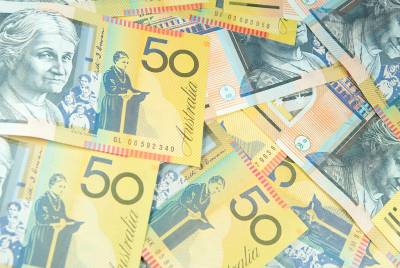
What is the difference between secured and unsecured personal loans?
A secured personal loan is backed by an asset that you own, used as security for the lender. An asset such as a car, property, cash, term deposit or other high-value assets such as jewellery can be offered as security for the loan as a way to protect the lender against the risk of default. If the borrower doesn't make their loan repayments for whatever reason, the lender can sell the secured assets to recover the money they lent out. A secured personal loan is safer for the lender as they can simply sell the secured asset if the loan repayments aren't made. This added level of safety means that interest rates are usually lower than unsecured loans.
An unsecured loan is a loan given without the borrower offering an asset to use as a backup in the event that they can't repay their loan. An unsecured loan is less risky to the borrower in the sense that their personal property is not at stake if they fail to repay their loan. However, the lender may try to recover the funds via other methods and so, the borrower doesn't get off scot-free if they don't repay their debt. Because there is no asset as a safety net to fall back on, when considering an unsecured loan application, the lender may rely more heavily on aspects such as the borrower's credit history, credit rating and income consistency and amount. They want to be extra sure that the borrower is likely and able to repay the loan.
The loan term differs greatly between a secured personal loan and an unsecured personal loan with the range for unsecured being 1 to 7 years compared to up to 15 years for a secured personal loan.
Benefits of an unsecured loan
Despite higher interest rates than secured loans, unsecured loans can have lots of benefits:
- Your personal property is not at stake. If for whatever reason you are unable to repay your loan, you wont lose your home or other assets.
- Flexibility. You can use the funds as you choose rather than for a specific purpose such as car loan with the car being offered as security. You can use an unsecured loan for things such as school fees, a holiday, debt consolidation––almost anything!
- Competitive interest rates. While the rates are generally higher than a secured personal loan, they may be much more competitive than the rates of a credit card. If you're paying off a number of debts at a high rate, you could consider consolidating the debts to a personal loan at a lower rate.
- Choose options that suit your needs. This is a very common type of loan that most lenders––traditional and otherwise––have on offer. Due to the number of unsecured loan products on the market, there is lots of choice available to find the right loan for you. You have the ability to choose the length of the term, the loan amount and whether the interest rate is fixed or variable. Having a wide range of choice means you can find a loan specific to your lifestyle needs.
How much can I borrow?
Generally, unsecured personal loans are for $2,000 up to $70,000, although it depends on which lender you go with as some will only lend up to $50,000 and others will go up to $100,000. For amounts higher than this, a secured personal loan may need to be considered.
Where can I get an unsecured loan?
Most lenders, from banks and credit unions through to non-bank lenders, will have their own version of an unsecured personal loan so you should be able to find a product to suit your needs. Traditional banks have rates sitting at approximately 8.99% to 12% while alternative lenders who consider applicants with bad credit have much higher rates for unsecured personal loans, with comparison rates in excess of 50% per annum.





